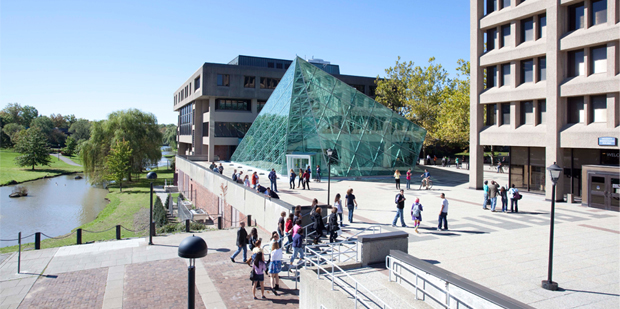Economic council chooses SUNY New Paltz 3D Printing Initiative as a priority for state funding
The Mid-Hudson Regional Economic Development Council (MHREDC) has chosen the 3D Printing Initiative at the State University of New York at New Paltz as a top priority project to be considered for state funding in this year’s round of Gov. Andrew Cuomo’s Regional Council Initiative.
State funding would allow New Paltz to construct a 7,500-square-foot facility on campus and purchase major 3D printing equipment, leveraging $500,000 of private funding committed by Ulster County businessman Sean Eldridge of Hudson River Ventures and Central Hudson in May to the new Hudson Valley Advanced Manufacturing Center at SUNY New Paltz. Hudson River Ventures has also committed $500,000 of venture capital to help launch new 3D printing enterprises in the region.
“We are excited to lead this initiative that shows so much promise to attract new business and industry, create new jobs, and grow the Hudson Valley economy,” said SUNY New Paltz President Donald Christian. “It’s a wonderful opportunity for us to link our faculty and students with businesses, community colleges, schools, and nonprofit organizations to build a distinctive regional identity in 3D printing and related research, design, and development. I am grateful to the Council for its support in advancing our project to the next stage of the state-wide funding process, and to Sean Eldridge, Hudson Valley Economic Development Corporation, and Central Hudson for their tremendous support. We believe that this initiative will build on the Mid-Hudson Regional Council’s strategic plan and will complement Round 2 funding of the Cloud Computing Center project at Marist College.”
The Center integrates the College’s strengths in engineering, computer science, technology, and the innovation and creativity of the arts. Key elements of this initiative include: a unique curriculum in Digital Design and Fabrication, aimed at advanced-level workforce development; a core facility of state-of-the-art equipment available to businesses and industry; active recruitment of 3D printing enterprises, with access to venture capital funds; a network of equipment access and collaborative educational programming at Hudson Valley community colleges and selected high schools to expand 3D printing capability in the region; and joining the START-UP New York tax-free initiative with a focus on 3D printing.
“Indeed, this is perhaps our best opportunity to participate in the Governor’s START-UP New York initiative, which hopes to spur economic development by building on the academic strengths of each SUNY campus,” said Christian. “We are eager to join Chancellor Zimpher and Governor Cuomo in their vision of SUNY as an important driver of jobs and the economy.”
“I’m thrilled that The Hudson Valley Advanced Manufacturing Center at SUNY New Paltz has been recommended as a priority project,” said Sean Eldridge, president of Hudson River Ventures and a founding supporter of the Center. “The Center is bringing new manufacturing technology and training to our region that will help grow our economy and create jobs.”
3D printing is an additive manufacturing process of layer-by-layer printing that produces three-dimensional objects using computer-aided design software. Using a number of different technologies, 3D printers can form objects out of a wide variety of plastics, metals, and ceramics, transforming many industries.
Created in July 2011 by Gov. Cuomo, the Regional Economic Development Councils represent a fundamental shift in the state’s approach to economic development from a top-down development model to a community-based, performance-driven approach that empowers individual areas to develop comprehensive strategic plans that invest in regional solutions to create jobs and economic growth. These councils are public-private partnerships made up of local experts and stakeholders from business, higher education, local government, and non-governmental organizations.
Priority projects are chosen based on their ability to stimulate job creation, private sector investment, and transformational economic growth in accordance with the goals identified by the Council’s strategic plan.

